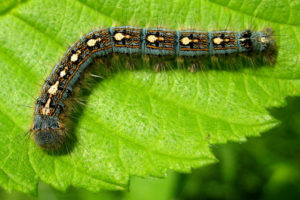Phenology & Eastern Tent Caterpillar
go.ncsu.edu/readext?592293
en Español / em Português
El inglés es el idioma de control de esta página. En la medida en que haya algún conflicto entre la traducción al inglés y la traducción, el inglés prevalece.
Al hacer clic en el enlace de traducción se activa un servicio de traducción gratuito para convertir la página al español. Al igual que con cualquier traducción por Internet, la conversión no es sensible al contexto y puede que no traduzca el texto en su significado original. NC State Extension no garantiza la exactitud del texto traducido. Por favor, tenga en cuenta que algunas aplicaciones y/o servicios pueden no funcionar como se espera cuando se traducen.
Português
Inglês é o idioma de controle desta página. Na medida que haja algum conflito entre o texto original em Inglês e a tradução, o Inglês prevalece.
Ao clicar no link de tradução, um serviço gratuito de tradução será ativado para converter a página para o Português. Como em qualquer tradução pela internet, a conversão não é sensivel ao contexto e pode não ocorrer a tradução para o significado orginal. O serviço de Extensão da Carolina do Norte (NC State Extension) não garante a exatidão do texto traduzido. Por favor, observe que algumas funções ou serviços podem não funcionar como esperado após a tradução.
English
English is the controlling language of this page. To the extent there is any conflict between the English text and the translation, English controls.
Clicking on the translation link activates a free translation service to convert the page to Spanish. As with any Internet translation, the conversion is not context-sensitive and may not translate the text to its original meaning. NC State Extension does not guarantee the accuracy of the translated text. Please note that some applications and/or services may not function as expected when translated.
Collapse ▲ Have you ever heard of the term “phenology”? The Merriam-Webster dictionary defines phenology as a branch of science dealing with the relations between climate and periodic biological phenomena such as bird migration or plant flowering. So, what this means is that we can use the development of plants during the growing season as an indicator of when certain insects may appear in the landscape.
Have you ever heard of the term “phenology”? The Merriam-Webster dictionary defines phenology as a branch of science dealing with the relations between climate and periodic biological phenomena such as bird migration or plant flowering. So, what this means is that we can use the development of plants during the growing season as an indicator of when certain insects may appear in the landscape.
A great example of using phenology this time of year is the Eastern Tent Caterpillar. You can correlate the hatching of the Eastern Tent Caterpillar eggs to when our native tree the Eastern Redbud begins to bloom which is also about the same time that wild cherry leaves begin to emerge. You will notice the webs or “bags” of the newly hatched caterpillars as they are built in the crotches of trees. This caterpillar’s favorite host plants are wild cherry, apple and crabapple. It can also be found on other fruit trees and native trees such as Eastern redbud, ash, birch, maple, oak and others.
The bags protect the caterpillars from predators. They return to the bag in the evening and will remain in it during inclement weather. Eastern tent caterpillar can easily be controlled when the bags are small by simply tearing them open to expose the small caterpillars to bird predators or you can remove the entire web and dispose of it. Damage done to trees from feeding does not harm the trees as they have evolved for many years with this insect. The damage of lost leaves occurs early in the season and new leaves will be produced to replace those lost to feeding.
Once mature, the caterpillars leave the tree to look for a place to pupate. They will build a white cocoon to pupate in which they will attach to tree trunks, fences, brick mortar, patio furniture, container pots, and many other things. The adult moths emerge in late June or early July to mate and begin the cycle over again. Females lay their eggs on stems about the size of your little finger and the egg mass looks like a brownish-black bump on the stem that has been varnished. You can monitor your trees in the fall and winter for the egg masses and hand rub them off or prune them out to reduce the number that will appear next spring.
Did you know that it takes thousands of caterpillars to feed one clutch of baby birds? If you like seeing birds in your garden, don’t destroy or spray these caterpillars, just open up the webs so the birds can use them to feed their babies.




